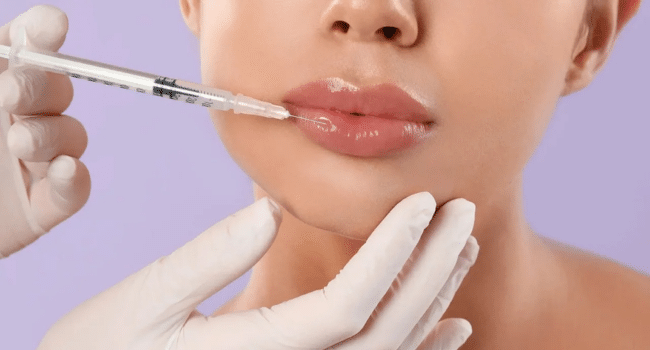Table of Contents
Introduction to Dermal Fillers
Are you searching for a way to restore a youthful glow or enhance facial features without invasive surgery? Dermal fillers could be your ideal solution. These less intrusive procedures have increased due to their effectiveness in reducing wrinkles, plumping lips, and contouring the face. Treatments like lip fillers have become household names for a good reason: the results speak for themselves.
In today’s beauty industry, dermal fillers offer a versatile option for enhancing one’s appearance. They provide immediate, noticeable results with minimal downtime, making them a go-to choice for many who wish to look their best. Because of these injectable therapies, the world of cosmetic improvements has undergone a revolution, offering alternatives to those wary of surgical procedures.
Types of Dermal Fillers
There is no one-size-fits-all solution when it comes to dermal fillers. Various fillers are available, each designed to meet different needs. Here are some of the most common:
Hyaluronic Acid Fillers
Hyaluronic acid fillers are the most well-known. They are primarily used to add volume, smooth wrinkles, and enhance facial contours. Hyaluronic acid is naturally present in the body, making it a well-liked and secure choice. This type of filler is often recommended for first-time users due to its compatibility with the body and natural-looking results.
Calcium Hydroxylapatite Fillers
These fillers, composed of calcium and phosphate, offer immediate results and are typically used to treat deeper wrinkles and folds. They can also stimulate natural collagen production, making them a dual-purpose option for immediate and long-term benefits.
Poly-L-lactic Acid Fillers
Known for their gradual but long-lasting results, poly-L-lactic acid fillers enhance skin texture over time by promoting collagen generation. These fillers are commonly used for facial volume loss, making them ideal for those looking to rejuvenate and add fullness to their faces.
Benefits of Dermal Fillers
Dermal fillers come with a host of benefits:
- Immediate and visible results are often noticeable right after the procedure.
- A short recuperation period allows you to return to regular activities more quickly.
- Versatility in treating various facial areas, from lips to cheeks to under-eye hollows.
- Non-surgical and minimally invasive, reducing the risks associated with cosmetic surgery.
According to the American Society of Plastic Surgeons, dermal fillers have seen a surge in demand partly due to these benefits. Their effectiveness in producing natural-looking results with fewer risks means more people opt for this treatment over traditional surgical procedures.
The Procedure Process
Getting dermal fillers typically involves an initial consultation to discuss your goals and medical history. The treatment session is usually quick, often lasting between 30 and 60 minutes. Depending on the area being treated, you may even be able to receive the treatment during your lunch break.
The practitioner will use fine needles to inject the filler into the targeted areas during the treatment. Most dermal fillers contain an anesthetic to minimize discomfort, making the process relatively painless. The entire procedure is designed to be as comfortable and efficient as possible, allowing you to see visible improvements immediately.
Once the procedure is complete, you can resume your daily activities immediately. However, some aftercare practices are essential to maximize the benefits and minimize potential side effects.
Aftercare and Maintenance
Recovery is essential to getting the most significant outcomes. Here are some indispensable aftercare tips:
- To minimize the chance of swelling or bruises, avoid intense activity and exposure to severe temperatures for a few days.
- Heed your practitioner’s advice to guarantee the best possible recovery and outcomes.
- Attend follow-up appointments as recommended to monitor your progress and make any necessary adjustments.
- For the first twenty-four hours, stay hydrated and abstain from heavy alcohol use.
Fillers require regular maintenance sessions to maintain their effect, and their longevity can vary based on the type of filler used and individual factors like metabolism and lifestyle. Consult a practitioner to schedule ongoing treatments for consistent, natural-looking results.
Read More on KulFiy
